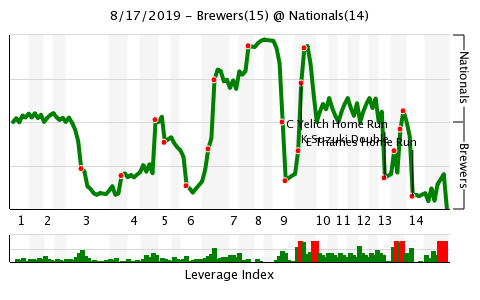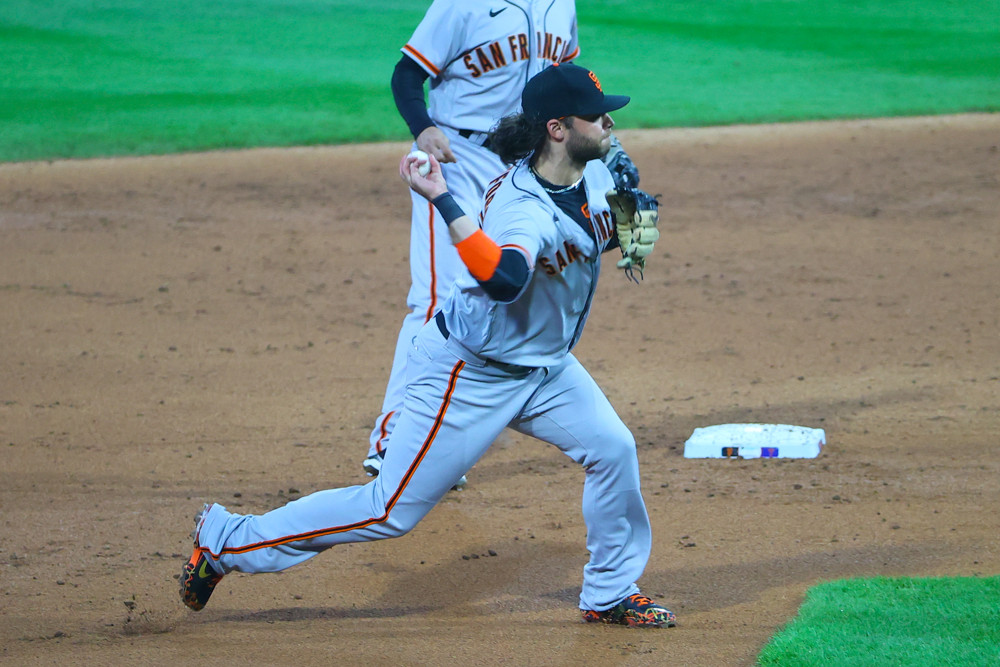By Will Hoefer
Milwaukee Brewers closer Josh Hader came into the August 17 game against the Washington Nationals with what was thought to be a lost cause for the Brewers just a half inning prior. Down 11-8, the Brewers socked three home runs against Nats’ closer Sean Doolittle to retake the lead, 12-11, heading into the bottom of the ninth.
Hader took the ball with a 1 run lead in the bottom of the ninth, promptly yielded a walk, a double and a single to give up the lead and loaded the bases on an intentional pass, all while failing to record a single out. He then reared back and struck out Trea Turner, Adam Eaton and Anthony Rendon to send the game to the top of the tenth inning.

In all, Hader entered the game with an 80% chance to give Milwaukee the win, brought it all the way down to 6.7%, then clawed it back up to a coin flip scenario. In a game fraught with improbabilities, this was some of the most improbable stuff you will ever see in a baseball game. Yet, at the same time, such a feat was most probable for Hader.
| Batter’s Odds Of Striking Out | Vs. Hader | Vs. League Average Pitcher |
| Turner | 42.9% | 19.8% |
| Eaton | 35.8% | 15.5% |
| Rendon | 33.0% | 13.6% |
| Three Straight K Odds | 5.0% | 0.4% |
(numbers rounded to one decimal)
Using the Log5 method to factor in the ability of the hitter to avoid a strikeout, we can see that the chance of Hader striking out Turner, Eaton and Rendon in succession is about 5%, which is about 12 times more likely than a league average pitcher. It’s hard to strike out any three major league hitters in a row, much less the very capable 1-2-3 hitters that Washington throws out on most nights. But what happens once in a blue moon for a run-of-the-mill MLB pitcher, happens once in a new moon for baseball’s best strikeout pitcher.
The only pitchers to strike out three batters in the worst case scenario that Hader put himself in–bottom nine, no outs, winning run on third– since 2002 are erstwhile mid 2000s Diamondbacks closer Greg Aquino in 2006, Blue Jays’ reliever Brett Cecil in 2014, and Twins reliever Taylor Rogers a little more than two weeks before Hader! Aquino actually struck out all three batters in a row (like Hader), whereas Cecil used an intentional walk to pitch around Evan Longoria and Rogers allowed a game-tying hit to Neil Walker to set up the situation, and intentionally walked Harold Ramirez in the middle of it.
In that spot, there’s a 13.4% chance a reliever can merely give his team a chance to regain the lead in the top of the tenth. To take all batted ball chance out of the equation puts a ton of pressure on the pitcher to make great pitches. But with Josh Hader on the mound, the weight of that pressure is as light as it ever could be.

